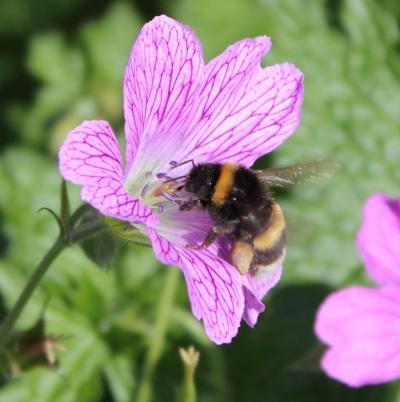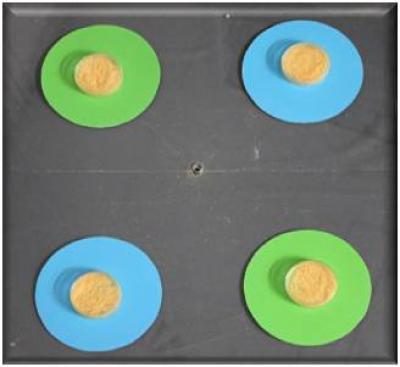Bumblebees can glean differences in pollen quality based on floral features like petal color and that informs their decision on where to land.
Bees do not sample pollen so it has been unclear how they determined quality. The new study in the Journal of Experimental Biology found that they are able to form associative relationships between appearance and pollen quality. Bumblebees can individually assess pollen samples and discriminate between them during collection, quickly forming preferences for a particular type of pollen.
Pollen foraging behavior involves learning and individual decision-making, which may allow bees to quickly learn which flowers provide the most nutritious pollen rewards for rearing their young, the authors write.

Credit: Elizabeth Nicholls
Dr. Natalie Hempel de Ibarra, Senior Lecturer in Neuroethology at the University of Exeter, said, "There is still very little known about how bees decide which flowers to visit for pollen collection. Easily learning floral features based on pollen rewards, without needing any nectar rewards, is a fast and effective way to recognise those flower species which bees have previously experienced to be the best ones."
Dr. Elizabeth Nicholls, a Post-Doctoral Research Fellow at the University of Sussex, said, "Bees need to be able to select flowers providing the most nutritious food for rearing their young. Since bumblebees don't eat pollen when foraging, it was unclear if or how they might be able to assess differences in quality. Here we've shown that they are able to detect differences in pollen, even before landing, which means they may be able to tell, just from the colour of the petals, which flowers are worth visiting.
"We already know a lot about how and what bees learn when collecting nectar from flowers, but since bees don't eat pollen when foraging, we were interested to see whether they could still learn which flowers to visit when collecting this resource."

The results show that bumblebees can individually assess pollen samples and discriminate between them during collection, quickly forming preferences for a particular type of pollen. Credit: Elizabeth Nicholls
The experiments involved manipulating the quality of pollen offered to the bees by diluting the samples. The researchers examined what they preferred to collect, if they could differentiate quality before landing by only letting the bees smell and see the pollen rather than probing it; and presenting the bees with four different coloured discs containing stronger and less diluted pollen to record preferences and change of preferences over time.

The experiments involved manipulating the quality of pollen offered to the bees by diluting the samples. The researchers examined what they preferred to collect, if they could differentiate quality before landing by only letting the bees smell and see the pollen rather than probing it; and presenting the bees with four different colored discs containing stronger and less diluted pollen to record preferences and change of preferences over time. Credit: Elizabeth Nicholls




Comments